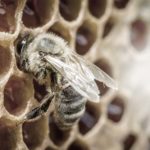
Honey Month 2024 – Honey’s “everlasting” expiry date?
Honey has been recognized as one of the most valuable natural products throughout history. Its uses extend beyond nutrition, playing important roles in traditional medicine and as alternative treatments for various health conditions. So it’s no surprise that the global honey market size was valued at US$9.01b in 2022 and is expected to grow, with revenue amounting to US$82.78m in 2024.
But this industry owes it success to its makers — honeybees.
There are at least 300 known types of honey today and more than 20,000 honeybee species that determine the composition of the honey.
But does honey ever spoil?
The chemical process carried out by bees as they collect nectar from flowers and convert sucrose (a combination of glucose and fructose) into concentrated simple sugars leads to the production of honey – a natural sweetener with antimicrobial properties that inhibit the growth of microorganisms responsible for food spoilage. Honey’s high sugar content makes it hygroscopic, allowing it to absorb moisture from the environment and surrounding microbial cells. Futhermore, honey has a low water content, which limits microbial growth, preventing it from spoiling.
Honey is primarily composed of sugars but also contains enzymes, minerals, vitamins, organic acids, flavonoids, and phenolic compounds. The presence of gluconic acid, along with acetic, formic, and citric acids, makes honey even more acidic than coffee. This pH range is lower than what most microbes can tolerate. Furthermore, the hydrogen peroxide in honey may prevent bacteria from forming a biofilm that usually sticks to surfaces.
All of these factors effectively prevent microbes from degrading honey. However, it’s important to note that while honey remains safe to consume for long periods, it does undergo changes over time.
One study notes that the sensory and chemical properties of honey are best preserved when stored at room temperature. How honey is handled and packaged can significantly impact its shelf life. Raw honey, with its intact enzymes and beneficial compounds, can last indefinitely when stored in a sealed container. Similarly, pasteurized honey can last for several years if stored properly. However, it is crucial to ensure that honey is sealed and stored correctly to protect it from potential microbial damage. Additionally, exposure to moisture can cause honey to crystallise or ferment.
HMF in honey
Heating or long-term storage of honey can lead to a Maillard reaction, the same chemical reaction that caramelizes sugar. This process can produce a potentially toxic compound called 5-hydroxymethylfurfural (HMF) as sugars dehydrate.
HMF (Hydroxymethylfurfural) is an organic compound produced by the acid-catalysed dehydration of sugars, and its measurement is crucial for evaluating honey’s compliance with government regulations. Elevated HMF concentrations in honey can indicate overheating, poor storage conditions, possible adulteration with other sugars or syrups, or simply the honey’s age, as HMF also forms naturally over time, not just due to heating.
The safety thresholds for daily consumption of HMF are not yet fully understood. Research findings are mixed, with some studies suggesting that HMF may contribute to cancer, while others propose its potential to prevent allergic reactions. However, this idea remains controversial and is still largely debated.
Although research on its toxicity is inconclusive, some limits have been set. The Codex Alimentarius (Alinorm 01/25 2000) states that the HMF content in honey after processing and/or blending must not exceed 80 mg/kg. Alternatively, the European Union (EU Directive 110/2001) has set a limit of 40 mg/kg, with exceptions allowing up to 80 mg/kg for honey from tropical regions and 15 mg/kg for honey with low enzymatic activity (8-3 Schade Units) due to differences in storage and processing conditions in warmer climates.
Nevertheless, this limit varies across different honey varieties. For instance, sunflower honey can reach this HMF threshold after 18 months of proper storage, while acacia honey may take approximately five years to reach the same HMF concentration.
How can we help?
To ensure honey quality, Biorex Food Diagnostics manufactures and supplies a range of enzymatic tests, including HMF, Glucose/Fructose, and Diastase, for use with our dedicated PRISM analyser. These tests enable producers to assess honey quality parameters that may be compromised during storage and processing. Additionally, monitoring sugar content with our Glucose/Fructose kit can help detect potential adulteration with high-fructose syrup.
With a minimal investment in the PRISM instrument and its user-friendly interface, these tests are designed to be easily accessible and usable by everyone from honey producers to retailers. Biorex Food Diagnostics’ honey analysis solutions provide rapid results, meet EU regulations, and reduce outsourcing costs to external laboratories.
Our goal is to help the honey industry showcase premium quality by improving in-house control testing.
You can view our full range of Honey testing products here.







